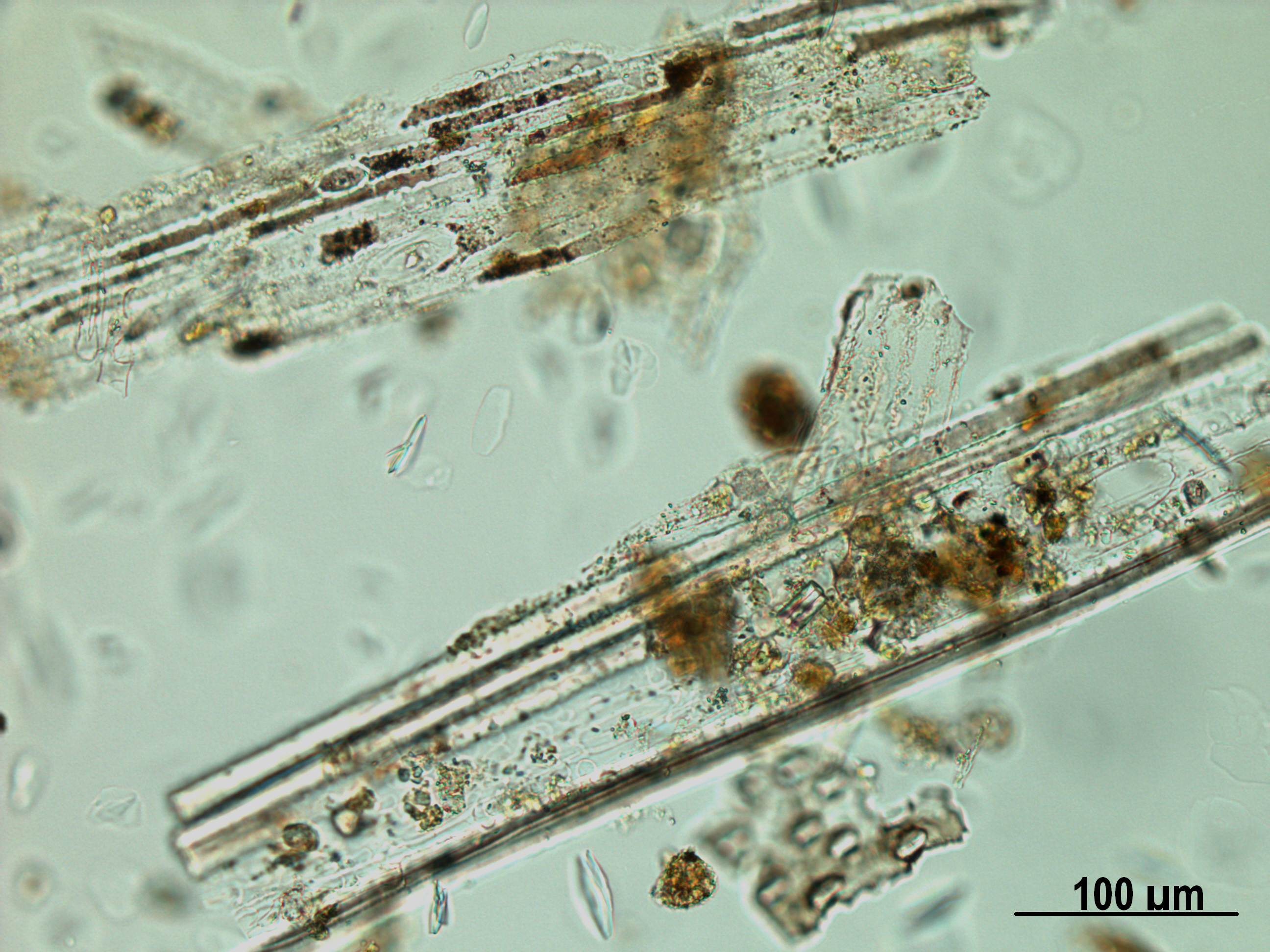Ash analysis
Fuel use in archaeology is often identified through the presence of wood charcoal, in association with features such as hearths, ovens and kilns. Non-wood fuels such as animal dung, peat and reeds/grasses, are more difficult to detect in the archaeological record using traditional methods, as they are rapidly transformed to ash on burning. ‘Microarchaeological’ techniques have the potential for identifying these ‘invisible’ fuel signals in the archaeological record, and studies at Çatalhöyük have shown that these materials were used frequently as fuels. Analysis of ash deposits from different stratigraphic levels, and from different contexts, will be integrated with geochemical indicators of burning to provide a comprehensive picture of the variability in fuel use for different activities, and how this changed over time.
 Micrograph showing conjoined reed phytoliths from ash deposits at Çatalhöyük (Turkey).
Micrograph showing conjoined reed phytoliths from ash deposits at Çatalhöyük (Turkey).



